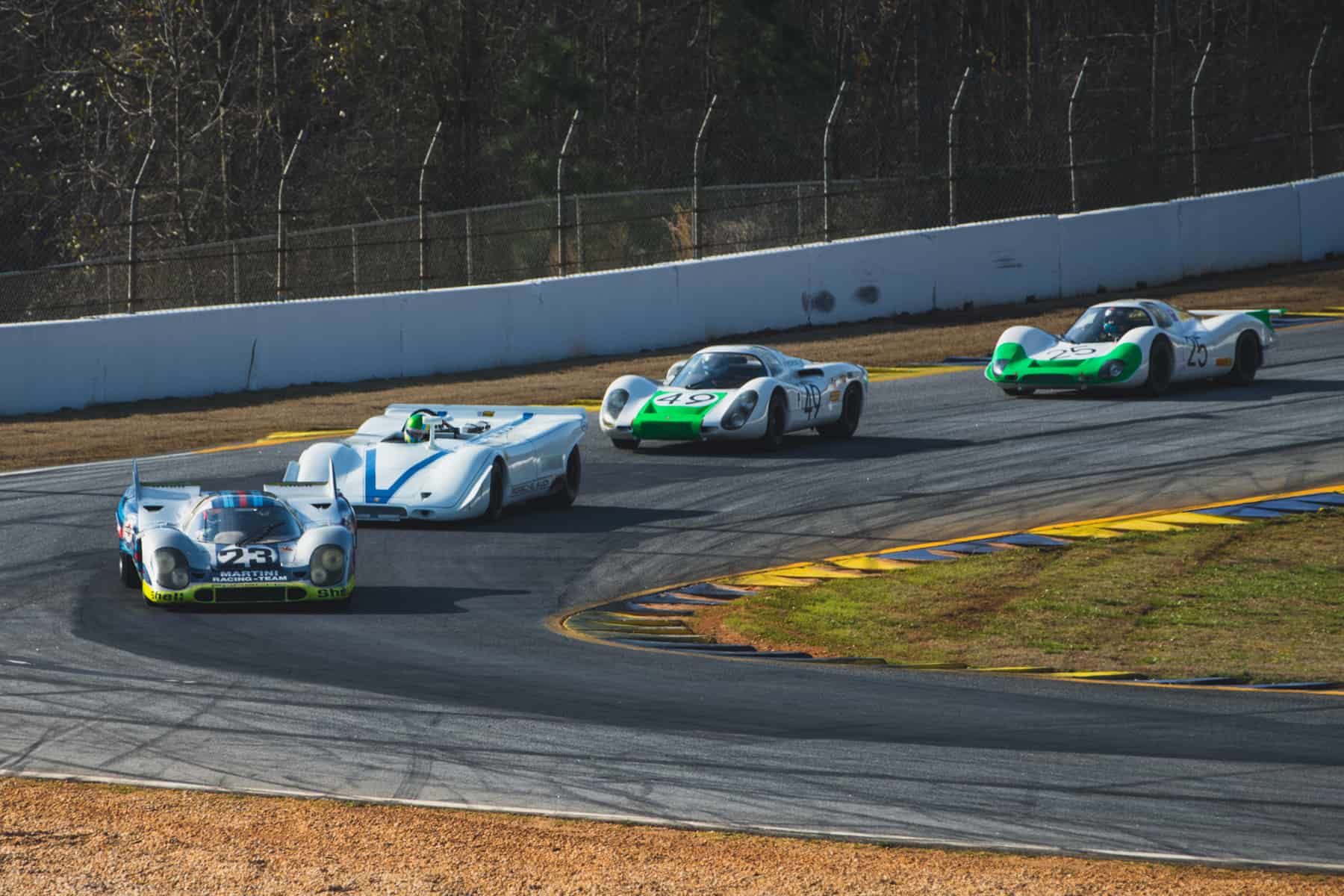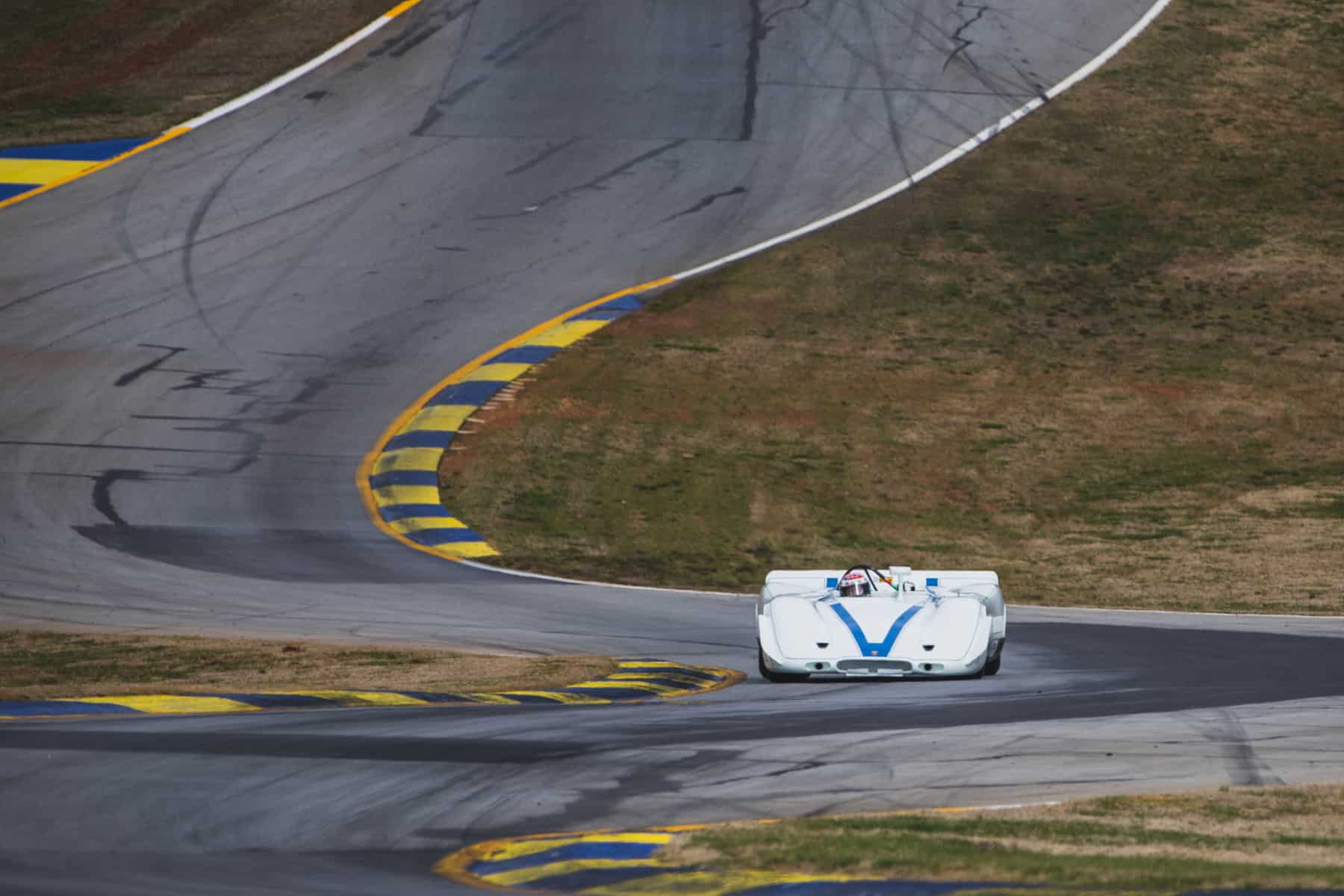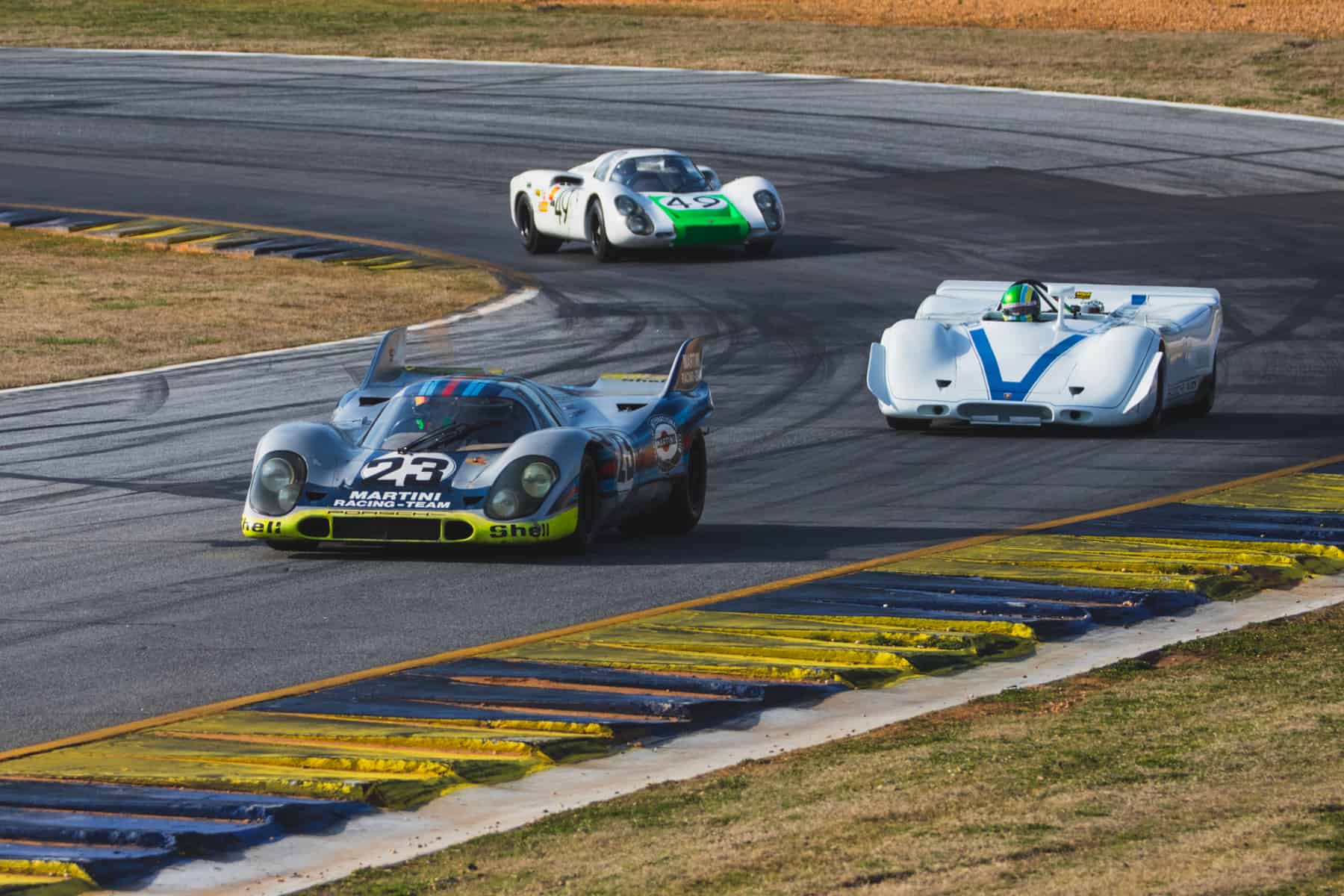The Presence of Porsches Past
Living history at Road Scholars/Revs at Road Atlanta
BY: MILES C. COLLIER
PHOTOS: REVS INSTITUTE
VIDEOS: GUNNAR JEANNETTE, AMANDA JEANNETTE
Recently, we sent five racing Porsches to the Road Scholars/Revs event at Road Atlanta. These fabulous events are not races but festivals celebrating the reactivation of significant historical Porsches and the reenactment of the racing experience by operating these precious objects at speed.
To add to the interest, two generations of professional drivers, including Hurley Haywood, Gunnar Jeannette, Patrick Long, and Jeff Zwart were on hand to do some of the driving.
Porsche 917K Martini and Rossi
Operating under the Revs Institute banner were five cars from the Miles Collier Collections: a 1961 RS-61 LWB Spyder with an eight-cylinder 771 engine; a 1968 Porsche 907 coupe that won the Sebring 12 Hour Grand Prix of Endurance; a 1969 Porsche 908 Lang Heck or long-tail coupe that won the Spa-Francorchamps 1000 Km event; a 1969 Porsche 917 PA, the factory’s first Can-Am car that finished fourth in that year’s championship; and finally an unrestored Porsche 917K Martini and Rossi works racer in 1971 configuration. The object of the event was to experience these and other special racing Porsches from behind the wheel and from the sidelines as they howled past in the sun.

The important idea governing our perceptions of these cars is that they are both historical matter and historical phenomenon. As such, we can experience the past in the present by driving, riding in, or watching these cars in operation on a modern raceway. Years ago, I took the 908 LH to Road Atlanta for some SVRA events and lapped the track in the exhibition (as distinct from vintage racing) class events, very much like what Road Scholars and Revs were doing this last week. I make no claim to circulating at Jo Siffert’s, or even Jo Siffert’s grandmother’s speed, but it was quick enough to approach peak revs in fifth before braking for the dip heading into the bridge. This lapping session was, for me, reenactment, and reexperience of the car’s originally intended 1969 function. I sat where skilled drivers like Brian Redman had sat, worked the same controls, saw the same things and felt, if not what Brian felt, at least an approximation, by my lights.
This reexperiencing is a necessary component of understanding and appreciating these cars. They are “active matter” and can only give a fair understanding of their design purpose by being experienced in the present. For example, my memories extend to recalling cockpit heat, a lot of it. The day I specially remember was one where temperatures were over 100 degrees Fahrenheit in the shade. Under those conditions, cockpit temperatures were no doubt much higher and the layered Nomex suit, balaclava, helmet, gloves, and driving boots all contributed. What would a two-hour stint in such a car under these conditions be like? A better appreciation for the job that professional drivers had to do in the day was an important take-away. I was more than happy to park the thing at the end of the twenty-minute scheduled session.
1969 Porsche 908 Lang Heck
It is illuminating to talk with modern-day professional drivers to get their more sophisticated take on fifty-year-old racing cars. Gunnar Jeannette and Patrick Long, two professionals at the height of their powers, gave us their impressions. Of course, in the case of Gunnar – whose dad, Kevin, is the plastic Porsche go-to guy with his great restoration crew at Gunnar Porsche who restored two of our cars – driving old Porsches was something he did from a teenager. Gunnar has been racing for twenty years in professional sportscar racing championships such as IMSA, the European Le Mans series, the World Endurance championship, and Le Mans 24 hours. Patrick Long is a Porsche factory team driver since 2004 and has driven for top teams in FIA World Endurance Championships, Rolex Sports Car Series, American Le Mans, NASCAR, and the Baja 1000. Patrick has accumulated three IMSA driver championships, and race victories at Le Mans, Daytona, and Sebring.

As the focus of these columns is on the archaeology of automobiles, learning from these drivers about what it’s like to be a modern driver driving a car ten years older than they are proved to be an interesting exercise.
Both drivers said that modern racing cars, whether production-based or purpose designed, exhibit sharper and quicker reactions. But this makes sense when we remember that so many tracks back in the day were little more than warmed-up public roads or airstrips: the Nürburgring, Sebring, Rouen Les Essarts, and the Targa Florio come to mind from among many, where the car’s ability to accommodate bumps, large camber changes, pavement deterioration, and even cobble stones required generous suspension travel and soft springs.
1961 RS-61 LWB Spyder
What hasn’t changed is the requirement for a driver from any period to make speed. The means and modes have evolved due to technology, but, says Jeannette, the driver who is consistently 4/10ths of a second off the pace won’t keep his seat for long, now or in the past. Patrick Long emphasized the importance of modern digital systems in the production of fast lap times. Compared to the old cars, which he refers to as more alive and giving more feel – perhaps due to the more gradual change in grip – the modern racing car demands convergence on an optimal technique that must then be applied with maximum effort. Consider the difference between an “H” pattern and clutch based shift system versus paddle shift system, which automatically takes care of speed matching between gears, avoids overrevving on downshifts, and generally handles the gear change “bookkeeping.” The 908 LH permits more options in taking a corner because of its simplicity. Driving is more of a tango, says Long.
Physicality is very different. The loadings that modern racing cars generate are multiples of historical racers. And the big difference is due to aero aids. Immediate physicality is much greater driving a high G-load car until one realizes that a half century ago, on average, the driver stints were longer as teams were normally two drivers versus today’s three, four, or more. Environmental conditions were equally different. Cockpit temperatures were not controlled years ago. Hence, we recall drivers overcome with heat prostration in the “bad old days.” Which is tougher: today’s stint-long peak driving intensity or the long, dangerous grinds of the past nursing a wounded car while maintaining lap times?

While old endurance cars were hard on their drivers due to the need for sheer physical endurance in environmentally difficult conditions, the modern racer has to drive at the car’s maximum at all times. Routinely braking an LMP car at 4Gs throughout an hour or more stint requires enormous physical strength. Cars are much more reliable today and can tolerate being operated at qualifying pace for the full duration of a race. The demand for the required intense concentration while monitoring a much more complex control system is something 917 drivers never had to experience, because unless required by a struggle for a place, (recall the epic Porsche/Ford battle for victory at Le Mans in 1969 that resulted in a Ford win by a mere 120 meters after twenty-four hours of racing) cars were driven as slowly as possible to ensure they could finish.

But looming above it all was the higher danger factor of the older cars. They were in many ways as powerful as modern cars, but substantially short on grip, reliability, and, most crucially, safety. The profession of racing driver in the ’60s, ’70s and ’80s was decidedly hazardous and was a factor that they had to deal with every day. Modern drivers like Long and Jeannette will tell interested questioners that compartmentalization is just as necessary a driving skill as it was in the past. It is just that the thing being compartmentalized is different. The Redmans and the Sifferts of the world back in the 1960s compartmentalized the thoughts of danger or say, suspension breakage. They truly had to believe that “it” would never happen to them, and while driving, no such thoughts could break the thought barrier. And the same is true today. What is being compartmentalized now is outcomes thinking, “I am catching the car ahead of me, if I pass him, I’ll be third.” Or, when driving historical cars, thoughts of the car’s monetary value. Performance depends on engaging the subconscious, and so Indy winner Kenny Brack talks about “that place in my mind where I go to drive.”
And that is the great commonality among old racing cars and those built just yesterday: they require intense focus and virtually perfect execution. That has not changed and will not change, because the fascination of this sport is the drivers’ abilities to extract everything the car has to give. And when you as a spectator see that, it’s not something you will soon forget.
Miles C. Collier’s forthcoming book, The Archaeological Automobile, will be published this fall.





